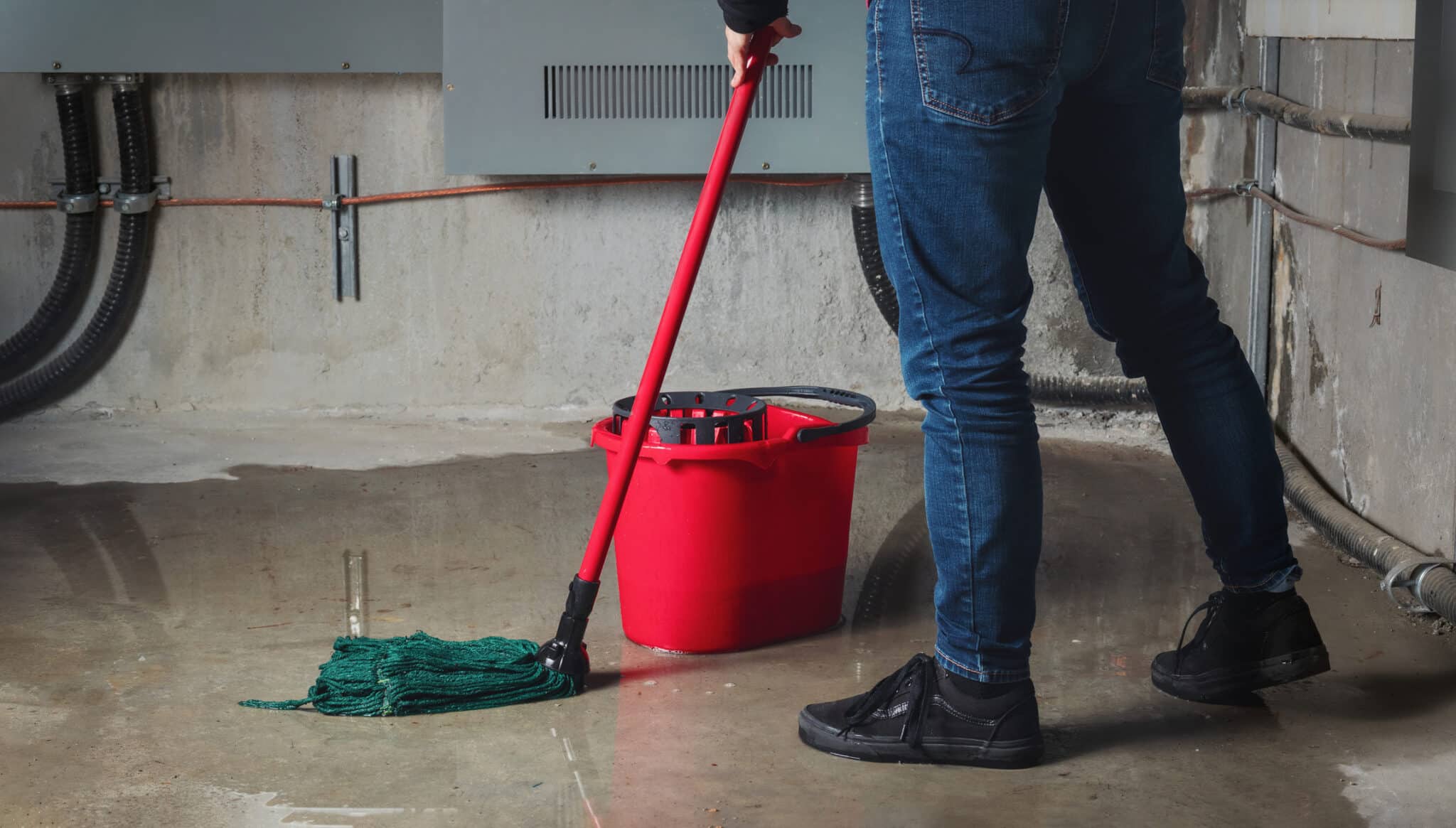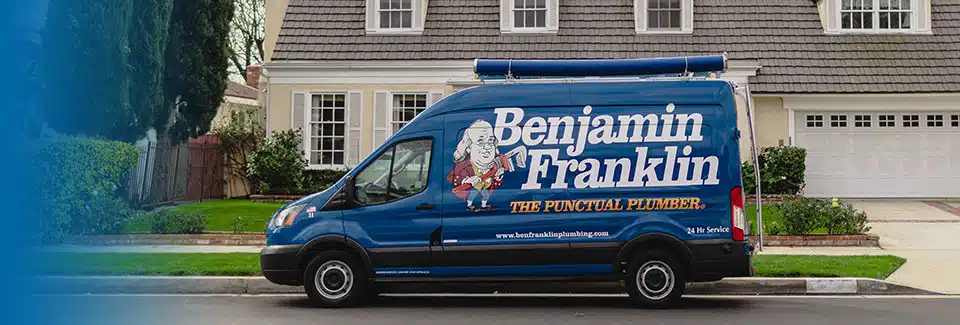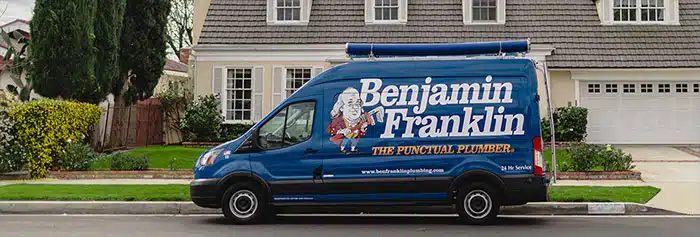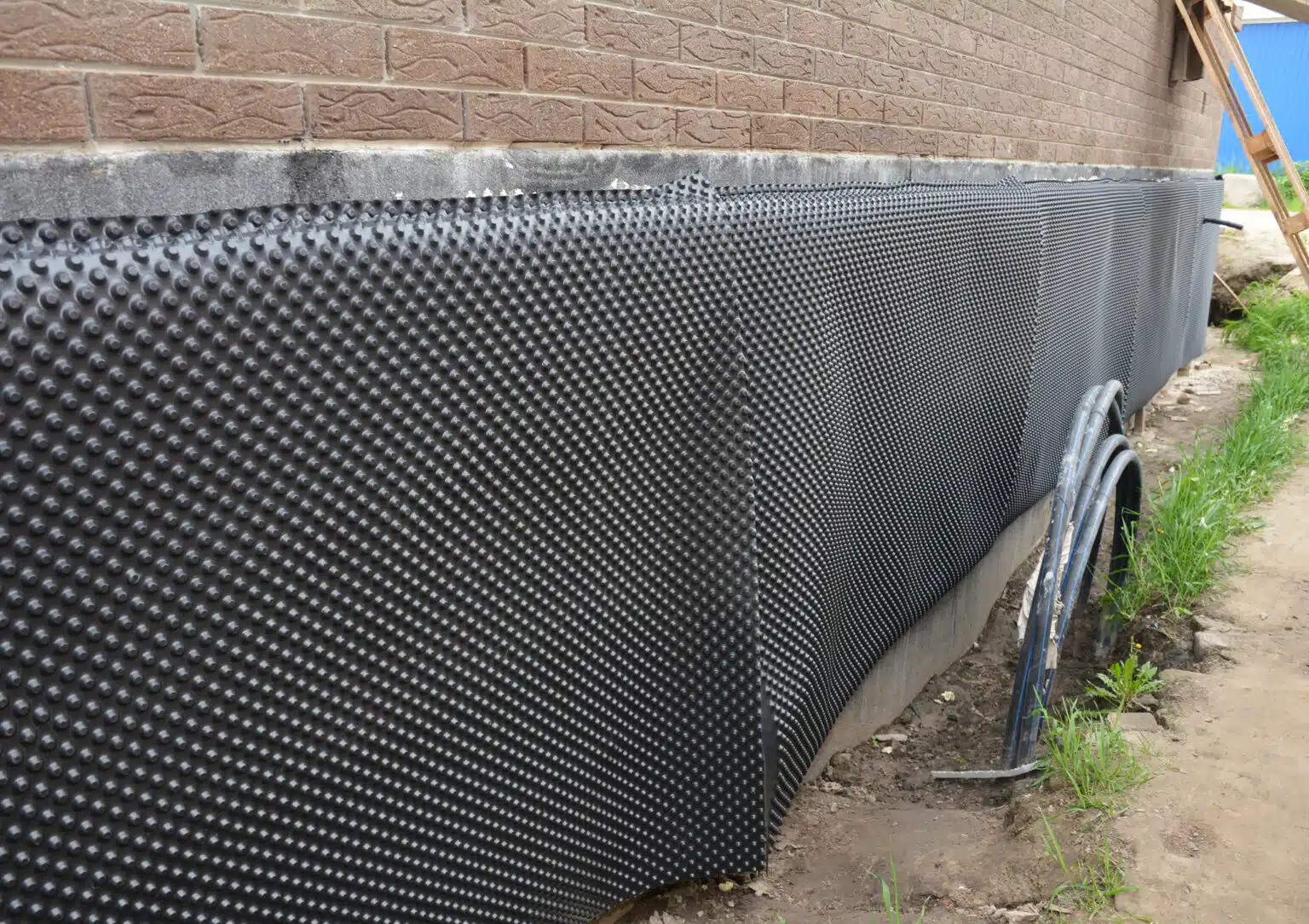Living in Buckeye, AZ, you may be familiar with the challenges posed by seasonal rains and potential flooding. Ensuring your home is adequately protected against water damage is crucial, and one effective measure is basement waterproofing. This guide will delve into the various methods and benefits of waterproofing your basement, helping you maintain a dry and safe living environment. It’s not just about damage prevention, this process can significantly enhance the value and comfort of your home.
Basement waterproofing is a critical step for any homeowner, especially in areas prone to water intrusion. By implementing robust waterproofing strategies, you can prevent the common issues of mold, mildew, and structural damage associated with basement moisture. These problems not only compromise the integrity of your home but can also pose health risks to your family. Therefore, understanding and applying the right waterproofing techniques is essential for long-term protection.
The benefits of basement waterproofing extend beyond just preventing immediate water damage. A well-maintained and moisture-free basement can increase your property’s market value, making it a wise investment for future resale. Moreover, it transforms this often-underused space into a viable area for storage or additional living space, free from the worries of water damage and the havoc it can wreak.
As we explore the various methods of basement waterproofing in this guide, keep in mind that each home in Buckeye will have unique needs. The right approach can vary significantly based on your home’s construction, location, and specific environmental challenges. This introduction sets the stage for a deeper look into how you can effectively safeguard your home through professional basement waterproofing, ensuring peace of mind during even the wettest seasons.
Understanding the Climate of Buckeye and Its Impact on Basements
Buckeye, AZ, experiences a unique climate that directly affects the need for basement waterproofing. The city’s desert environment brings hot summers and mild winters, but don’t let the dry climate fool you. Occasional intense rainfalls can lead to flash flooding, particularly during the monsoon season from July to September. This sudden influx of water can overwhelm basements, making waterproofing a critical consideration for homeowners.
The soil composition around Buckeye also plays a significant role in basement moisture issues. The area’s clay-rich soil tends to expand when wet and can exert considerable pressure on basement walls. This hydrostatic pressure can cause cracks and leaks, which if left unchecked, lead to significant water damage. Basement waterproofing becomes not just advisable but essential to prevent these problems and protect your home’s foundation.
Moreover, the temperature fluctuations in Buckeye can affect your basement’s integrity. During the day, the high temperatures can cause the ground to dry out and shrink, while cooler nights may lead to condensation. This cycle can create a constant state of movement in the materials used to construct your basement, necessitating a robust waterproofing system to manage these dynamic conditions effectively.
Understanding these specific environmental factors is crucial for implementing the most effective basement waterproofing strategies. By addressing the unique challenges posed by Buckeye’s climate and soil, homeowners can ensure that their basement remains dry and structurally sound. This proactive approach not only protects the home but also enhances its value and usability, affirming the importance of tailored waterproofing solutions in maintaining a safe and comfortable living environment.
The Importance of Basement Waterproofing in Buckeye
In Buckeye, AZ, the importance of basement waterproofing cannot be overstated, especially considering the local environmental conditions. Homeowners face unique challenges that make their basements vulnerable to water damage. Waterproofing is not just a preventive measure; it is a necessary investment to maintain the structural integrity and livability of your home. Ignoring the need for effective waterproofing can lead to costly repairs and decrease your home’s overall value.
Basement waterproofing offers numerous benefits that go beyond just keeping the space dry. It significantly reduces the risk of mold and mildew, which are common in damp environments and can cause health issues. By ensuring that your basement remains dry, you are creating a healthier environment for your family. Additionally, a waterproofed basement is less likely to suffer from pest infestations, which are attracted to moist areas.
The process of basement waterproofing in Buckeye also involves safeguarding your home’s foundation. Water can be incredibly destructive, potentially leading to foundational instability. By implementing a comprehensive waterproofing strategy, you effectively mitigate these risks, ensuring that your home remains safe and secure for years to come. This proactive approach not only protects but also enhances the value of your property.
Finally, considering the climate and soil conditions specific to Buckeye, tailored basement waterproofing solutions are essential. Each home may require a different approach depending on its location, construction, and exposure to natural elements. Professional waterproofing services can offer customized solutions that address these individual needs, providing peace of mind and a significant return on investment. This strategic approach ensures that your home is well-equipped to handle whatever weather conditions may arise.

Common Signs of Basement Water Issues in Buckeye Homes
Identifying water issues in your basement early can save you from extensive damage and costly repairs. In Buckeye, AZ, homeowners should be vigilant about spotting signs of moisture intrusion. Common indicators include water stains on walls and floors, which suggest that water is seeping into your basement. Another telltale sign is efflorescence, a white, powdery residue left on surfaces when water evaporates, indicating a persistent moisture issue.
Another sign to watch for is the presence of mold or mildew, which thrives in damp, dark areas. If you notice a musty smell or see black, green, or white growths, it’s likely that your basement has excessive moisture. This not only poses health risks but also suggests that your current basement waterproofing measures might be inadequate. Additionally, if your basement feels unusually humid or you find condensation on pipes and walls, these are clear signals that moisture levels are too high.
Cracks in the basement walls or floor are also red flags. While small cracks can be normal due to settling, larger fissures can indicate serious water pressure issues from the outside, especially in areas with clay-rich soils like Buckeye. These cracks can widen over time, allowing more water to infiltrate your basement, undermining the structural integrity of your home. It’s crucial to address these cracks promptly to prevent further damage and maintain effective basement waterproofing.
Lastly, if you notice pooling water in your basement after rainstorms, or if your sump pump is constantly running, these are urgent signs that your basement’s waterproofing system is overwhelmed. This could be due to inadequate drainage or a failure in the waterproofing system itself. Homeowners should consider these signs as immediate prompts to consult a basement waterproofing professional to assess and rectify the situation, ensuring long-term protection and peace of mind.
Basement Waterproofing Techniques for Buckeye Homes
Exploring effective basement waterproofing techniques is crucial for homeowners in Buckeye, AZ, due to the area’s unique environmental challenges. One popular method is the application of sealants and epoxy injections, which are used to fill cracks in basement walls and floors. This not only prevents water from seeping into the basement but also strengthens the structural integrity of the area. Sealants are best for minor, non-structural cracks, while epoxy injections are suited for more substantial fissures.
Another vital technique involves the installation of interior drainage systems. These systems are designed to capture water that enters through the basement walls or floor and redirect it away from the home, typically using a sump pump. This method is highly effective in managing water intrusion and is less invasive compared to exterior waterproofing, which involves excavating around the home. Interior drainage systems can be customized to suit the specific layout and needs of your basement, ensuring optimal water management.
For comprehensive protection, exterior waterproofing should also be considered. This method includes the application of a waterproof membrane or coating to the exterior walls of the basement, effectively creating a barrier against water penetration. Additionally, improving exterior drainage by installing proper gutters and downspouts, and ensuring the landscape slopes away from the foundation, can significantly reduce the risk of water damage. These measures, while more costly and labor-intensive, provide a robust defense against water intrusion.
Lastly, homeowners should consider the benefits of a French drain system, particularly in areas with clay-rich soils like Buckeye. This system involves installing a trench filled with gravel and a perforated pipe around the perimeter of the home. It is designed to intercept and redirect groundwater away from the foundation, preventing it from building up and exerting hydrostatic pressure on basement walls. French drains are especially effective in managing the expansive soil conditions typical in Buckeye, offering a long-term solution to basement water issues.
The Role of Sump Pumps and French Drains in Basement Waterproofing
Sump pumps and French drains play a pivotal role in basement waterproofing, especially in areas like Buckeye, AZ, where environmental conditions can lead to significant water management challenges. A sump pump is designed to actively remove water that has accumulated in a sump basin, typically installed in the lowest part of a basement. This system is crucial in preventing water from rising to a level where it can cause damage. It operates on a simple mechanism that activates when water reaches a predetermined level, ensuring consistent removal and transport of water away from the home.
French drains, on the other hand, serve as a passive water management system. These are installed around the perimeter of a house or internally beneath the basement floor to intercept and redirect water. Consisting of a trench filled with gravel and a perforated pipe, French drains provide an easy channel for groundwater to flow through, diverting it safely away from the foundation. This system is particularly effective in managing the expansive clay soils found in Buckeye, which can exert hydrostatic pressure on basement walls.
Combining sump pumps and French drains offers a comprehensive approach to basement waterproofing. The sump pump deals with water that enters the basement, while the French drain prevents water from ever reaching the foundation. This dual-system strategy maximizes the dryness and integrity of the basement, protecting against both surface and subsurface water. Homeowners benefit from reduced risk of water damage and the associated problems of mold, mildew, and structural weakening.
For optimal effectiveness, both sump pumps and French drains should be installed by professionals who understand the specific hydrological and environmental dynamics of the region. This ensures that the systems are correctly sized and properly placed to handle the typical water flow and soil conditions in Buckeye. By investing in these reliable basement waterproofing systems, homeowners can enjoy a safer, drier basement that enhances the overall value and comfort of their home.

How Basement Waterproofing Enhances Your Home’s Value
Basement waterproofing is not just a preventative measure; it’s a strategic investment that enhances your home’s marketability and value. In Buckeye, AZ, where environmental conditions can challenge the integrity of home structures, having a waterproofed basement is a significant selling point. Potential buyers are often willing to pay more for homes that guarantee dry and secure basements, as this reduces their future maintenance concerns and potential repair costs. This added value is crucial in competitive real estate markets.
Moreover, basement waterproofing can transform an underutilized or unusable basement into valuable living space. Whether it’s a home gym, an office, or an extra bedroom, this additional functional square footage can substantially increase your property’s overall value. In areas like Buckeye, where every square foot counts, maximizing your usable space can lead to a higher appraisal value. This is especially beneficial if you plan to sell your home, as buyers often prioritize homes with more livable space.
Additionally, homes with waterproofed basements tend to have lower insurance premiums. Insurance companies recognize the reduced risk of water damage and may offer discounts or more favorable terms. This financial benefit is a direct result of effective basement waterproofing, as it minimizes the likelihood of costly claims related to water damage, mold, and mildew. For homeowners in Buckeye, this means not only saving money but also enjoying the peace of mind that comes with a well-protected property.
Finally, maintaining a dry basement through proper waterproofing techniques can prolong the structural integrity of your home. Water damage can lead to severe issues, including foundation problems, that are expensive to repair. By investing in basement waterproofing, you’re essentially securing the longevity of your property. This not only helps in maintaining its value over time but also in ensuring that your home remains safe and stable for years to come, making it a wise choice for any homeowner in Buckeye.
Maintaining Your Basement Post-Waterproofing
After successfully implementing basement waterproofing measures, maintaining the integrity of these systems is crucial for long-term effectiveness. Regular inspections play a pivotal role in this maintenance routine. Homeowners in Buckeye, AZ, should schedule periodic checks to ensure that all components of the waterproofing system, such as sump pumps and interior drainage channels, are functioning correctly. These inspections can help catch minor issues before they escalate into major problems.
Keeping an eye on the external factors that contribute to basement moisture is also essential. Ensure that gutters and downspouts are clear of debris and that the landscape around your home continues to slope away from the foundation. These practices prevent water accumulation near the basement walls, which is critical in avoiding the hydrostatic pressure that can compromise your waterproofing system. Additionally, check for any new cracks or signs of moisture penetration during each season change.
In terms of interior maintenance, managing the humidity levels inside your basement is vital. Use dehumidifiers if necessary, especially during the humid months, to keep moisture levels low. This not only protects the structural integrity of the waterproofed areas but also prevents the growth of mold and mildew. Ensuring good air circulation within the basement can further aid in maintaining a dry environment, safeguarding your home against potential moisture-related damages.
Lastly, it’s beneficial to keep a record of all maintenance activities and any observations related to the basement’s condition. Documenting these details can be incredibly helpful for professional services if more significant repairs or adjustments are needed. It also provides a history of the basement’s condition that can be useful for future reference or if you plan to sell your home. By actively maintaining your basement waterproofing systems, you ensure the continued safety and efficacy of these investments, keeping your Buckeye home dry and secure.
Frequently Asked Questions
What are the common signs that your basement needs waterproofing?
Common signs that your basement requires waterproofing include persistent dampness or musty odors, which indicate excess moisture. If you notice water stains on the walls or floors, it’s a clear signal that water is seeping in. Cracks in the basement walls or floor can also allow water to enter, worsening over time if not addressed. Addressing these signs promptly with basement waterproofing can protect your home from further damage and maintain its value.
How does climate in Buckeye affect basement waterproofing strategies?
The climate in Buckeye, characterized by its hot summers and mild winters, significantly influences basement waterproofing strategies. Due to minimal rainfall, the focus is often on managing occasional but intense storms that can lead to sudden flooding. This necessitates a robust basement waterproofing system to handle sudden water ingress effectively. Homeowners are advised to implement comprehensive drainage solutions and use high-quality sealants to ensure their basement remains dry and protected year-round.
What are the best materials for basement waterproofing in Buckeye homes?
The best materials for basement waterproofing in Buckeye homes include flexible sealants and waterproof coatings that can withstand extreme temperatures. These materials are crucial for creating a barrier against moisture and preventing water damage. Additionally, using a combination of drainage mats and sump pumps enhances the effectiveness of basement waterproofing by managing water flow away from the foundation. Homeowners should opt for durable, high-quality products to ensure long-lasting protection and peace of mind.
What are the first steps in basement waterproofing for a Buckeye home?
The first steps in basement waterproofing for a Buckeye home involve a thorough inspection to identify any existing issues like cracks or water stains. Professionals typically assess the exterior and interior of the basement to determine the primary sources of moisture. Following the evaluation, cleaning and preparing the surfaces for waterproofing treatments is crucial, ensuring that sealants and other materials adhere properly. Finally, installing proper drainage systems and applying high-quality waterproof coatings are essential to effectively safeguard your basement against potential water damage.
How often should you inspect your Buckeye home for basement waterproofing issues?
Inspecting your Buckeye home for basement waterproofing issues should occur at least annually. This regular check-up helps catch potential problems early, such as minor leaks or cracks, before they escalate. Considering Buckeye’s climate, it’s wise to schedule inspections before the rainy season to ensure your basement remains dry during sudden storms. Additionally, after any significant weather event, a follow-up inspection can verify that your basement waterproofing systems are still performing optimally.


